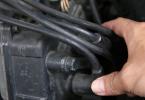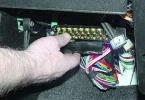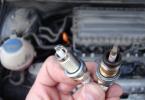When gears are poorly shifted, driving becomes not only unpleasant, but also unsafe. Let's look at the main reasons why gear changes are poor or not at all. And since the automatic transmission and manual transmission are too different, we will consider them separately.
If you have a mechanic
Poor gear shifting on a car with manual transmission for three reasons. The first of these is a clutch malfunction when it does not completely disengage (drive). The first sign of this malfunction is that the reverse gear is engaged with a characteristic bang. The rear one reacts to this anomaly more noticeably than other gears, because it is the only one not equipped with a synchronizer.
The second reason is a defect in the gear selection mechanism of the gearbox. And, finally, the third - excessive wear of gearbox synchronizers.
There are also several clutch malfunctions in which manual transmission gears are poorly shifted:
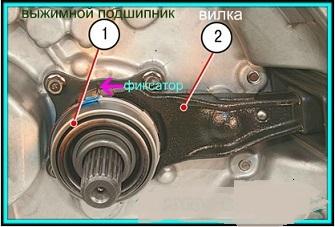
Excessive wear of the synchronizers is mainly in those gears that are turned on more often: these are usually the first, second and third. The rear one does not fall into this list, since it does not have a synchronizer. When you have poor gear changes, and you assume that the reason for this is the wear of the synchronizers, firstly, you should have difficulties with this only on the go. Secondly, it is better to switch in this case if you use double squeeze.
For those who do not know what a double squeeze is. To upshift: depress the clutch, engage neutral, release and depress the clutch again, engage the gear.
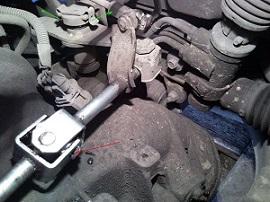
Backlash in the so-called "helicopter" is one of the reasons for the fuzzy engagement of gears
To switch to a lower one: double squeezing must be combined with a gas release, that is, when the clutch pedal is released, and the gearbox is in neutral, you need to press and release the accelerator pedal. So they switch gears to an auto box which does not have synchronizers. If the box will shift more easily using a double release, it is most likely worn synchronizers that are to blame for poor gear shifting.
If the gears are poorly shifted when the car is stationary with the engine turned off, the malfunction may only be in the gear selection mechanism of the gearbox.
Look for a breakdown in it or check if it is correctly adjusted. Don't even think about the clutch and synchromesh.
For those who have a machine gun
If your car has an automatic transmission. It will not hurt you to know the modes in which your machine can operate:

The automatic gearbox has a button on the mode switch lever with the inscription O / D OFF. When it is turned on, the inclusion prohibition occurs, which increases the transmission of the analogue of the 5th gear of the manual transmission. That is, if your automatic machine has 4 gears for moving forward, then for a more dynamic acceleration it will use only three lower gears.
The automatic transmission is much more complicated than those encountered with manual transmissions about a gearbox malfunction, and the chances of repairing it in your garage are small. But despite this, you still need to know something about her at least in order not to harm her by improper operation.
The automatic gearbox is much more demanding on the accuracy of maintaining the oil level in it than mechanics. Both too low and excessively high oil levels are very harmful to her. Both can lead to serious damage. In both cases, oil foaming occurs. With a lack of oil due to the fact that the oil pump, together with the oil, begins to capture air. If there is an excess of oil, it is foamed by rotating parts, which in this case are immersed in it. Foamed oil compresses better and has low thermal conductivity. Therefore, if you operate the machine with such oil, the pressure in its control systems will be low. Which will lead to slipping of the clutches and their intense wear. The deteriorated thermal conductivity will not allow all excess heat to be removed. That, combined with low pressure, will cause the machine to fail and require serious repairs. 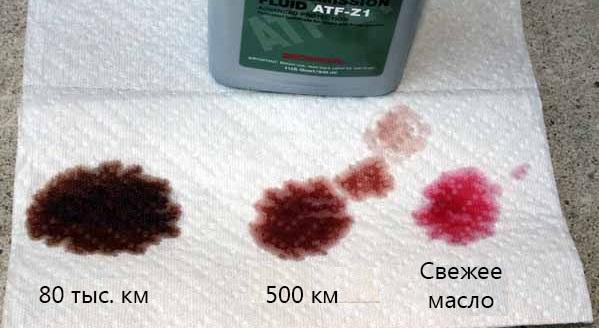
Foamed oil has a larger volume. Therefore, checking the oil will indicate a level that is too high. If you find that the oil level has risen for no apparent reason, you need to turn off the engine and let the oil settle. Then check the level again. If it turns out to be low, you need to safely top up the required porium and repeat the check.
The oil level in the vending machine is checked using a dipstick or through a control hole closed with a plug.
How to check the oil level with a dipstick
- Warm up the oil to operating temperature (for this you need to drive about 15 km).
Select a flat horizontal area for measurement. Put the car on the handbrake.
- Move the lever to select the operating mode of the box through all positions, lingering in each from 3 to 5 seconds, until the machine is triggered.
- Leave the mode selector in position P, and in this position determine the oil level.
- Without turning off the engine, remove the oil dipstick, wipe it dry and reinsert it into the tube until it stops, then pull it out and read the readings. The upper limit of traces of oil on a dry dipstick should be at the mark marked hot or in an area with intersecting notches.
If the level is insufficient, you can add oil through the tube into which the dipstick is inserted. Do not forget that the automatic transmission is afraid of dirt, so only top up with clean new oil. Wipe the dipstick with a clean cloth that does not fall out of threads.
When checking the oil level, pay attention to its appearance. A dark liquid with a burning smell indicates that not everything is in order in the unit. First, try changing the oil and filter in the automatic transmission. The milky color of ATF indicates that coolant has entered the box. The coolant softens and inflates the material from which the clutches are made. Do not hesitate to change such oil, having previously eliminated the cause of the antifreeze entering the box, otherwise the machine will suffer significant damage. Coolant can enter the box due to a leak in the oil section in the radiator of the cooling system. In this case, the emulsion will be observed both in the box and in the engine cooling system. 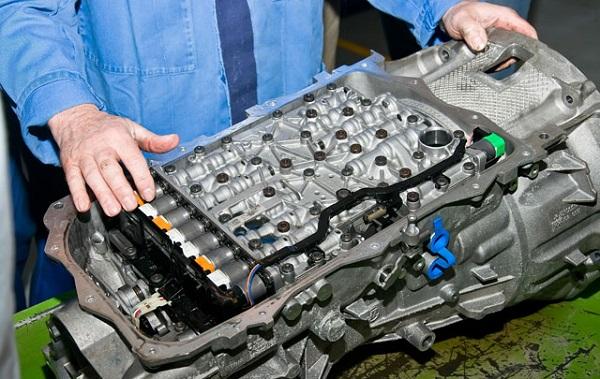
The most common machine malfunctions
- The car does not drive forward, reverse movement is normal. Possible reasons: wear of the forward clutch friction clutch, defect in the piston of this clutch, breakage of the rings of the same clutch, jamming of the valve body valves.
- There is no reverse speed, there are only 1 and 2 forward. Probable reasons: wear of the reverse clutch clutches, a malfunction of the piston of this clutch, damage to the spline connection in the drum housing, another defect of this drum.
- No back, forward everything works. Reasons: wear of the brake band, malfunction of the piston of this band or breakage of its rod, defects in the braking package.
- There is no forward or backward movement when any mode is turned on, there is a push to switch, but the car stands still. Reasons: malfunction of the torque converter, lack of oil, clogged filter.
- Only reverse, 1st and 2nd gears are included. Reasons: jamming of the valve in the valve body, low oil level, general wear of pistons and clutches of gear clutches that do not turn on.
